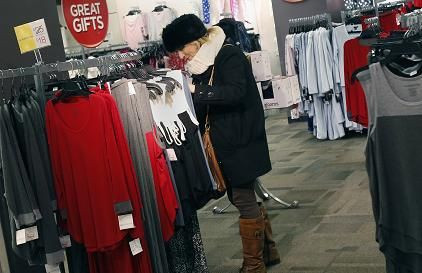US Small Retailers Could See Sales Shrink This Year: Survey
Americans might be buying more stuff this year, but not so much from mom and pop

About half of Americans work for businesses with fewer than 100 employees, so the performance of these small operations is in many ways more significant to the state of the economy than how big, publicly listed, beholden-to-Wall Street corporations fare in a globalized, outsourced world.
But, according to recent data from North Carolina-based Sageworks Inc., which specializes in tracking the performance of privately held companies whose information is not accountable to public disclosure laws, the smaller a U.S. retail operation, the smaller its sales gain has been in the previous 12 months.
Private retail companies with annual sales of more than $10 million have seen 11.2 percent growth in year-to-date sales. Meanwhile, businesses with less than $1 million in annual sales have seen growth decline by 2.6 percent, according to the data.
This means that the locally owned gift shop, the tiny Main Street fashion boutique or the independent grocery store operator are not doing as well as the bigger fish in the retail pond. And that means they won’t hire as many employees this holiday season as they struggle to try to break into positive 12-month growth territory for the final quarter of the year.
So what’s the problem?
Foot traffic is down across the board. American consumers are spending less time in stores and more time ordering goods and services through mobile apps on their smartphones and tablets. Meanwhile, small-business owners lack the resources to instigate large marketing campaigns or build flashy online storefronts with downloadable apps.
Plus, unlike larger companies, these business owners lack the resources or technological know-how to adapt to the changing circumstance -- mainly because they’re too busy with their day-to-day operations.
“There are several obstacles for them. Small-business owners have to wear multiple hats. They’re the ones interacting when people come into the store,” says Sageworks research analyst Elizabeth Bierman, who worked on the study. “They have a lot to do, and they don’t have time to explore things like Amazon.com [virtual storefronts].”
Small businesses across the economy continuously create about half of all private sector jobs. In October, ADP’s monthly jobs report said 77,000 of the 158,000 nonfarm jobs were created by employers with less than 500 workers; about two thirds of them were employers with less than 50 workers.
So what’s the solution?
Small businesses should work to increase their visibility, virtual or otherwise. And there are new tools for this.
Just as your mom might have recently discovered Facebook, mom and pop have learned the power of social networking. Even a simple Facebook Page and a little user engagement can make a difference for local businesses.
“Any way they can increase visibility is going to help them,” said Bierman. “There are a lot of options available to them, like Google Adwords, where they can introduce a profile to drive traffic locally to these companies.”
One example of raising small business profiles is the introduction in 2010 of Small Business Saturday, started by American Express Company (NYSE: AXP), aimed at promoting local commerce on the day following Black Friday, the busiest shopping day of the year.
On Tuesday, the National Federation of Independent Business said that, according to its survey, this year’s Small Business Saturday shopping hit $5.5 billion, higher than the forecast $5.3 billion, as more Americans have been made aware of the national campaign to boost localized commerce.
© Copyright IBTimes 2025. All rights reserved.






















